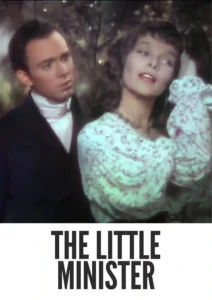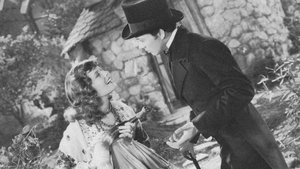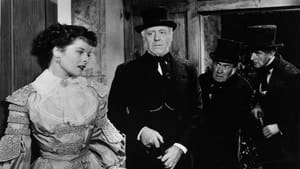Video Sources 0 Views
- The Little Minister 1934 Colorized


Synopsis
Table of Contents
ToggleHighland Romance: The Little Minister (1934) in Breathtaking Color

Step back in time with The Little Minister, a heartwarming romantic period drama from 1934, now beautifully colorized for a viewing experience that captures the essence of its era. Starring Katharine Hepburn, this film tells a touching story of love and community in a quaint Scottish village. Perfect for fans of classic romance and historical dramas, this HD download brings a timeless tale to life with stunning visuals and emotional depth.
The Little Minister Storyline: Love and Conflict in a Scottish Village
The Little Minister is set in 1840s Scotland and revolves around Gavin Dishart (John Beal), a newly appointed minister to the small, tight-knit village of Thrums. Gavin is young, idealistic, and determined to make a positive impact on his new parish. However, his arrival is met with mixed reactions, as the villagers are wary of outsiders and resistant to change.One night, Gavin encounters a mysterious and beautiful woman named Babbie (Katharine Hepburn) in the forest. Babbie is unlike anyone he has ever met—free-spirited, unconventional, and fiercely independent. Despite their differences, Gavin and Babbie are drawn to each other, and a passionate romance blossoms between them.However, their love is threatened by social and religious barriers, as well as by the arrival of soldiers sent to quell unrest among the villagers. Babbie is revealed to be Lady Babbie, a noblewoman who is sympathetic to the plight of the poor and downtrodden. Gavin must choose between his duty to his congregation and his love for Babbie, while also helping to resolve the conflicts within the village. The film explores themes of love, faith, social justice, and the clash between tradition and progress, all set against the backdrop of the picturesque Scottish Highlands.
Movie Cast
The film boasts a talented cast of actors who bring depth and authenticity to their roles:
- Katharine Hepburn as Babbie
- John Beal as Gavin Dishart
- Donald Crisp as Dr. McQueen
- Dorothy Kirk as Margaret
- Frank Albertson as Rob
Movie Genre
The Little Minister falls into the genre of romantic period drama, blending elements of romance, historical fiction, and social commentary. Its heartwarming story and picturesque setting make it a beloved classic for audiences of all ages.
Historical Context: A Glimpse into Hollywood’s Golden Age
Released in 1934, The Little Minister showcases the talent and craftsmanship of Hollywood’s Golden Age. The film was produced during a time when studios were experimenting with new technologies and pushing the boundaries of cinematic storytelling. The Little Minister reflects the era’s fascination with historical settings, romantic narratives, and strong female characters, offering a glimpse into the cultural and artistic trends of the 1930s.
Colorization Details
This colorized version of The Little Minister has been meticulously restored, enhancing its visual appeal while preserving the film’s original charm and atmosphere. The colorization process involved carefully analyzing the grayscale tones of the original black and white footage and assigning appropriate colors to each scene. This painstaking process brings new life to the characters, costumes, and landscapes, making the story even more captivating for modern audiences.
Technical Details
- Director: Richard Wallace
- Screenplay: Jane Murfin, Sarah Y. Mason, Victor Heerman
- Based on: the novel by James Matthew Barrie
- Cinematography: Henry Gerrard
- Edited by: James B. Clark
- Production Company: RKO Radio Pictures
- Distributed by: RKO Radio Pictures
- Runtime: 110 minutes
Technical Specifications
- Download Format: MP4
- Resolution: HD (1080p)
- Compatibility: Compatible with most devices, including smartphones, tablets, computers, and smart TVs.
Reviews and Critical Reception
The Little Minister (1934) is celebrated for its heartwarming story, beautiful cinematography, and the captivating performances of its cast. The film has been praised for its portrayal of love, faith, and community, as well as for its depiction of social issues in 19th-century Scotland. As a beloved classic, The Little Minister continues to resonate with audiences, offering a timeless message of hope and compassion.
FAQs
- Q: What is The Little Minister about?
- A: The Little Minister tells the story of a young minister who falls in love with a noblewoman in 1840s Scotland.
- Q: Is The Little Minister (1934) a well-known Katharine Hepburn film?
- A: Yes, The Little Minister is one of Katharine Hepburn’s early and memorable roles, showcasing her talent and versatility as an actress.
- Q: Is this version of The Little Minister colorized?
- A: Yes, this version has been professionally colorized to enhance the viewing experience.
- Q: What makes The Little Minister interesting for classic film fans?
- A: The Little Minister offers a glimpse into Hollywood’s Golden Age, showcasing its talent and craftsmanship in storytelling.
- Q: What is the download format?
- A: The download format is MP4, which is compatible with most devices.
- Q: What resolution is the download?
- A: The resolution is HD (1080p), providing a high-quality viewing experience.
Download Now in HD!
Watch The Little Minister Today!














